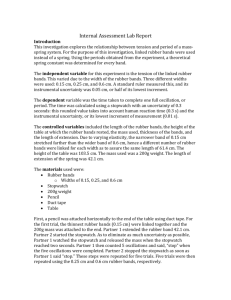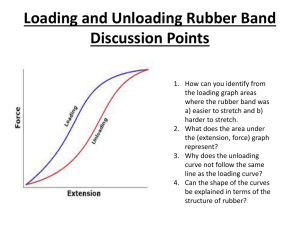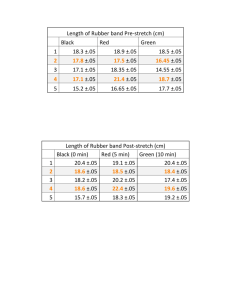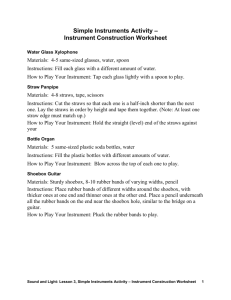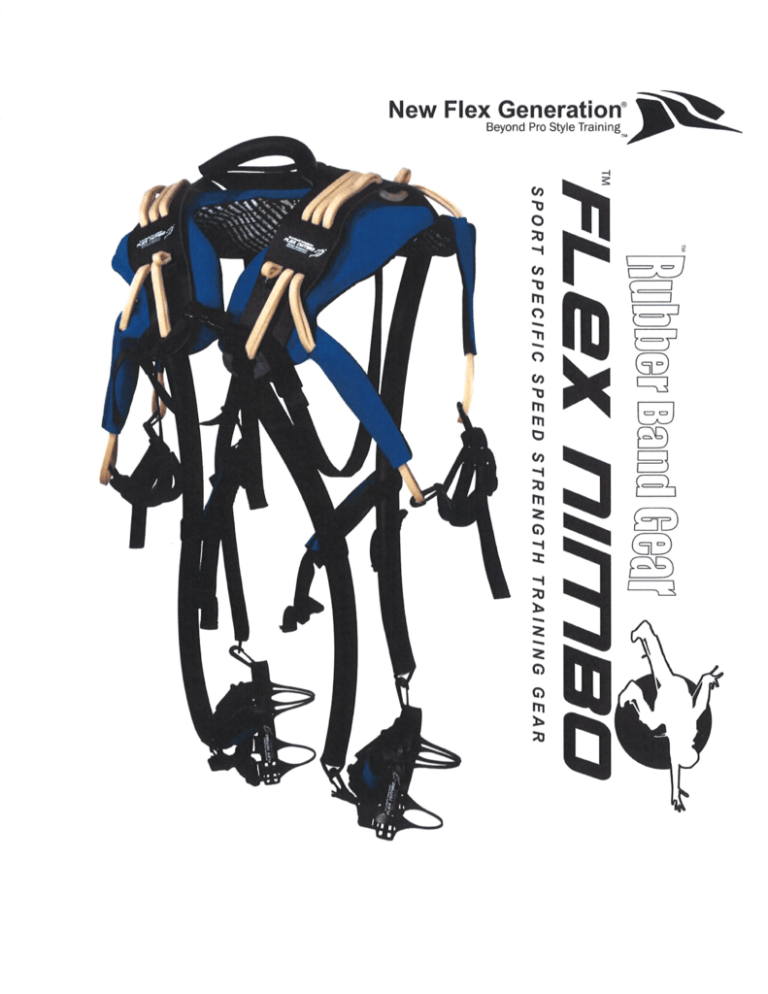
Flex nimbo Burpess for Armed Forces
Avoid over exertion at this point. Avoid over exercising or straining to achieve. Avoid training to failure.
Standing in the upright position feet slightly apart, maintain a rapid motion, push down with the arms and squat swiftly 'touching the
floor with both hands' moving swiftly kick both feet back into a plank pushup position return your feet to the squat position then
thrust up into standing upright position in a single fluid motion jumping explosively using the momentum of the squat to help drive
the arms up and hands over your head pressing the arms above the head.
Practice achieving all movements with fluid explosiveness. Adapt your body towards generating more force of movement throughout
the entire motion.
Repeat.
Flex nimbo Jump Training Exercises
These plyometric exercises are sport-specific vertical jump exercises, compound exercises
working both the knee and hip joints. The muscles that are responsible for about 80% of
your jumping power will be the quads, hamstrings and calves.
Facing the hoop go underneath the backboard and off to the left or right side of the
hoop. Hold a basketball over your head and jump straight into the air. Continue jumping
up and down while holding on to the basketball, bounce it off of the backboard. Land on
your toes and explode into the air, while bouncing the ball off of the backboard. Do this
20 times on five separate occasions.
Paused Jump Squat - Squat down so that your thighs are parallel to the ground and then
hold this position for 3 seconds. Next, EXPLODE UP. Do 3 sets of 8.
Lunges
Start and remain in an upright position.
Step forward as far as possible without leaning forward with your upper body.
Step until your front knee is at a 90 degree angle.
Step back to starting position in one step.
Perform 10 lunges with one leg, and then repeat with the other.
Step Ups
You will need a bench or step-up box. The bench or box should be 16-18 inches high.
Start in an upright position.
Step up on the box or bench with one foot so that your knee is in a 90 degree
angle.
Step up with the other foot so that both feet are on the box or bench.
Step back down one foot at a time.
Perform 10 step ups with one leg, and then repeat with the other.
Flex Nimbo Training Program Friday Station 1: Agility Ladders Group 1: • (R) lateral scissors (single touch) sprint forward to 15 yard, jog back ......... 5 times • (L) lateral scissors (single touch) sprint forward to 15 yard, jog back ......... 5 times • Double foot slalom, jog back .................... 5 times Hurdles Group 2: 6” hurdles • (R) lateral, sprint to 15 yard, R side shuffle 5 yards, back pedal to baseline .................................... 3 times • (L) lateral, sprint to 15 yard, L side shuffle 5 yards, back pedal to baseline .................................... 3 times Group 3: 12” hurdles (1 yard apart) • High knees, sprint to 15 yard, R side shuffle 5 yards, back pedal to baseline .................................... 3 times • High knees, sprint to 15 yard, L side shuffle 5 yards, back pedal to baseline .................................... 3 times Station 2: Acceleration Group 1: •
Sprint baseline to 15 yard line ................. 2 times Group 2: • 3 Long Jumps & sprint from baseline .... 2 times Group 3: •
Browns Agility [5,10,15 yard] .................. 2 times Station 3: If Time Permits Push ups .................................................................... 30 seconds Rest .............................................................................. 30 seconds Squat jump ............................................................... 30 seconds Flex Nimbo Training Program Sunday Station 1: Power Group 1: •
Hurdle jump to wall touch ......................... 5 times Group 2: • 5 Standing long jumps ................................. 5 times (Jog to baseline) • Chest pass & side shuffle ............................ 3 times each side (Progression: further apart) Group 3: •
•
•
Squat jump ........................................................ 30 seconds Knee tucks ......................................................... 30 seconds High knees ......................................................... 30 seconds 10 second rest between 1 full rotation, then speed round with 10 seconds each Group 1: •
Group 2: (R & L) lateral explosion (balance) ........ Continuous until time • Medball chest pass/push up ..................... 10 times Progression: Standing 3 pushups: 1 pass for control group Group 3: •
•
•
Center plank ..................................................... 30 seconds (R) plank ............................................................ 30 seconds (L) plank ............................................................. 30 seconds 10 second rest between Progression: No Rest Station 2: Active Ass Kicking (AAK) Forward lunge ........................................................ 15 yards Power skips .............................................................. 15 yards Frankensteins ......................................................... 15 yards Forward lunge ........................................................ 15 yards Push ups .................................................................... 30 seconds Squat jump ............................................................... 30 seconds Quickness Recovery:
When wearing Flex nimbo® during speed play, such as running a pass
route all out, the ball is thrown to you. Your central nervous system
sends a signal throughout your body sensory your eyes and
coordination of limbs are all working together to adjust your reactions
to the timing of the balls arrival into your hands. Flex nimbo® is adding
resistance to those types of high speed movements and causes your
body to work harder at real world movements involved with your field of
play. You have total freedom to reposition yourself, decelerate and
accelerate while under constant total resistance. The effectiveness of
Flex nimbo® is when you are in suspended animation, your mind
(central nervous system) is saying “yes, I am responding” but your
response is being resisted by rubber bands attached to your arms and
legs gradually exhausting and causing you to work harder at movement
that are normally quite simple. Repetitive attempts to catch a ball
while wearing Flex nimbo® and running will sharpen kinetic awareness
vestibular sense.
Flex nimbo™
is n ot yo ur st and ard r e si sta nce trai nin g p rog ra m s
inv ol ving li ftin g w eigh ts in slo w an d c ontr olle d mo v em ent s fo r
mu scl e gr oup s t o incr ea se mu s cl e siz e an d en dur an ce. We o ffer
highl y s pec ifi c r esi st an ce sti mu l i.
D ue to t he s pec ifi cit y o f
sk elet al m us cle, sp ort stre ngt h and c ondi tion ing c oa che s a re
con st antl y s eek ing to find tr aini ng pro gra m s a nd d evi ce s tha t
mimi c sp ort a cti vit y.
There has never before been any published research on the use of elastic bands being used
simultaneously on the upper and lower extremities. METHODS: while wearing high resistance
Flex nimbo™ bands (HI), one trial while wearing low resistance Flex nimbo™ bands (LO) and
one trial without any resistance (CON). Oxygen consumption and heart rate were continuosly
measured during exercise and for 10 minutes post-exercise. RESULTS: Overall energy
expenditure was highest with the HI band (102 Kcals) vs. LO (92 Kcals) vs. CON (69 Kcals).
CONCLUSION: These data show that Flex nimbo™ band resistance gear increased energy
expenditure during the walking bout in our subject. This increase in energy expenditure
demonstrates an increase in the efficiency of an exercise workout.
One (1) male 28 years of age served as a volunteer participant in the case study. The research
was ongoing in testing and recruitment. The scheduled number of subjects was twenty-five (25).
Recruitment efforts included mass e-mailing to the faculty, staff, and student population at The
University of Akron, as well as direct personal contact of the principal investigator. All subjects
were healthy and free of any disease that may be exacerbated by exercise and free of any
medication that might alter their metabolic response to exercise. Inclusion or exclusion from the
present investigation was determined following the completion of a health history questionnaire.
Results
Test subject’s body composition was measured by the Bod Pod and Max Test was performed by
using the PARVO Metabolic Cart; data collected was used as a control for the research (see
Page 1 of 6
New Flex Generation Inc. Copyright © 2009
Table 1). Overall energy expenditure was highest with the HI band (102 Kcals) vs. LO (92
Kcals) vs. CON (69 Kcals). Results concluded that low intensity elastic resistance produced
superior energy expenditure to walking without resistance (23 Kcals). There is a relative
difference in energy expenditure between walking without and low intensity elastic resistance;
furthermore, there is minimal difference (10 Kcals) between high and low intensity elastic
resistance. The data represents a relationship of increase in energy expenditure to the intensity
levels of the elastic resistance (see Figure1).
Figure 1. Energy Expenditure with and without the use of elastic band resistance in calories calculated during exercise and recovery for all trials.
Dash lines represent possible increase in energy expenditure during time extended trials.
To determine the validity of the elastic resistance other metabolic data has been graphed for
comparative studies. Metabolic Equivalents (MET) results (Figure 2) are consistent with energy
expenditure and show that the as work level increased so did caloric expenditure. Respiratory
Exchange Ratio (RER) results (Figure 3) concluded that though the high intensity resistance is
more strenuous it remained parallel to the quantitative figures for energy being burned in the
form of carbohydrates. The low intensity resistance bands peaked at a higher number than the
high intensity resistance in energy expenditure with the use of carbohydrates, but lowered to
figures equivalent of fat burning. While the high intensity demonstrated the constant use of
carbohydrates for energy use, the low intensity added the perception of being versatile in using
fat and carbohydrates for energy expenditure.
Page 2 of 6
New Flex Generation Inc. Copyright © 2009
Figure 2. Calculation of METS in relation to with and without elastic band resistance in METs calculated during exercise and recovery for all
trials.
Page 3 of 6
New Flex Generation Inc. Copyright © 2009
Figure 3. Chart of Energy Expenditure and percent of Kcals used from carbohydrates and fats based upon VCO2 and VO2 ratio.
Figure 4. Calculation of Heart Rate (HR) with and without elastic band resistance calculated during exercise and recovery for all trials. Recorded
HR was then compared to Maximal HR.
Page 4 of 6
New Flex Generation Inc. Copyright © 2009
Heart Rate (HR) monitoring provided the data to show the elevation in heart rate remaining
constant with the elevation of the band resistance (see Figure 4). Both high and low intensity
obtained relative differences in reaching HR levels. High intensity elastic resistance caused HR
to reach 75.5% of determined maximal HR. VO2 Max levels (Figure 5) rose with high intensity
resistance reaching 50% of maximal VO2 max.
Figure 5. Comparative graph of VO2 Max during research study.
These data show that Flex nimbo™ band resistance increased energy expenditure during the
walking bout in our subject. The results in this case study proved the hypothesis reporting energy
expenditure increased during physical activity with the use of Flex nimbo™ band resistance;
however, research recorded an increase of energy expenditure during recovery.
Page 5 of 6
New Flex Generation Inc. Copyright © 2009
This case study displayed results that Flex nimbo™ band resistance can maximize a workout
session. The elastic band device known as the Flex Nimbo™ Speed Strength Gear is an
invention that can surely be seen used in, military and space programs, high school, collegiate
and professional level athletic programs, and rehabilitation programs in clinics and hospitals.
Future research topics may include: data collection of simultaneous upper and lower body use of
elastic bands; lactate studies of the muscles during use of elastic band resistance; studies based
on gender differences and the effects the elastic resistance has on the body; and the effects of
elastic resistant workouts in space for astronauts. Rubber band resistance Flex Nimbo™ Speed
Strength Gear, is proven to enhance human performance strength, speed, flexibility, endurance
and cardiovascular.
“Strength and speed is the most sought-after physical quality in an athlete”.
Page 6 of 6
New Flex Generation Inc. Copyright © 2009
For setting the arms tension, shorten the rubber bands longest length ends which lead to the hand grips. Simply
lace the arm length back into the harness then pull a loop beneath the harness. Start first by pulling the two lateral
length ends of the arm rubber bands out from the slot of the shoulder pad sleeves. Then lace the rubber band
length from the top of the harness down through the harness rectangular holes while at the same time pulling the
rubber band from beneath the harness until the length ends leading to the hand grips are shortened as desired
and an excess loop is pulled beneath the harness. The same procedures are performed laterally to each side of the
harness front and back. Always try to lace the rubber bands length ends equally in length then pull a loop above
the harness to the desired height when adjusting the arm or leg tension.
1
2
3
4
Begin weaving at the front of harness or at the rear of
always be equal in length after pulling the loop above the
the harness while working back and forth, the rubber
shoulders of the harness.
bands length from the harness to the hand grips should
www.flexnimbo.com
©2009 New Flex Generation, Inc. All Rights Reserved.
Forming the loop, decreasing the rubber band length to extremities, increase tension
Weave the rubber bands forward or in the direction of their short tail end, pulling the rubber bands into a loop above the
harness to a desired height. Pulling the resistance rubber bands short tail ends is demonstrated in the video as an optional
method but we recommend that you do not pull the short tail end of the rubber bands out
5
7
9
6
8
10
www.flexnimbo.com
©2009 New Flex Generation, Inc. All Rights Reserved.
Removing the loop increasing rubber band length to extremities, decrease tension
11
12
13
14
Technical description of Flex nimbo™ rubber band self locking arrangement
Introducing our revolutionary new harness concept is made of a polymer with mechanical properties
comprised of rubber bands that are nestled down and also held by pressure circumscribing the
shoulders, when the rubber bands are pulled, the rubber bands retroflex and lock. Heavy duty vinyl may
be substituted for POLY ETHYLENE (UHMW) Ultra High Molecular Weight Polymer; flexural
strength 73 degrees F compression molded 3,500 PSI tensile strength 5,800 PSI. Our rubber bands offer
a minimum of 35lbs- 50lbs, and a maximum 75lbs of total resistance force. There are a total of six rubber
bands, three per each side of the vest each rubber band is presenting between 8.75lbs - 18.75lbs. Max
load per square inch of surface area at the anchor points. POLYETHYLENE (UHMW) Maximum load per
square inch of surface area at 73 degrees F' room temp is 1,800 PSI. At 150 degrees F' room
temp (UHMW) Maximum load is 400lbs PSI of surface area. Each rubber band has four anchor points
www.flexnimbo.com
©2009 New Flex Generation, Inc. All Rights Reserved.
along their span. The harness holes configuration dissipates the rubber band loading at certain
undistorted anchor points.
Four foam tubes are retracted through four holes which have been cut through at each corner of the
harness. Six rubber bands are connected by lacing or braiding through a row of precise rectangular
holes. The Rectangular holes are dimensioned comparable in measurement to the lay flat height and
width of the rubber bands. The rubber bands are adjustable in order to remove slack in rubber bands for
variable resistance. The rubber bands will apply effective loading throughout the user movement, a
none varying force is applied throughout the entire movement.
Flex nimbo™ rubber bands are made of 100% natural rubber because of their superior elasticity. The
rubber band cross sections are rectangular or square and allow for a neater lay flat appearance in the
assembly. When you stretch the rubber bands, especially at high speed the protracting and retracting of
the rubber band will produce heat, this is called thermodynamics, whilst stretching it and then releasing
it will produce an endothermic reaction, causing it to appear "cooler. The harness and rubber bands are
compatible properties that will not allow over heating between the two properties, this will enable the
rubber bands to self lock in and through a plurality or matrix of square holes that are spaced apart and
are precisely cut through the harness so that the rectangular holes will choke the rubber bands that are
laced through the hole in a convex and concaved pattern. The convex, concaved feature will also allow
the user to adjust the length and tension of the rubber bands and also replace the rubber bands which
are available in three different widths and wall thickness in order for the user to vary the stimulus to the
specificity of skeletal muscle. When the rubber bands are pulled thin by their length ends away from
the harness, the rubber bands will swell thicker the rectangular holes and self seal tightly in their holes
and lock.
Tension adjustment feature
The free floating rubber bands can be unlaced to some degree for lengthening or reducing the tension
and laced further through the holes and then pulled into a loop above the harness in order to shorten
and increase the rubber band tension, therefore, eliminating the undesirable slack. When shortening
the rubber bands or increasing the tension the excess length of the rubber bands leading to the users
www.flexnimbo.com
©2009 New Flex Generation, Inc. All Rights Reserved.
extremities are drawn through the holes of the harness into a loop dangling above the harness. The
sizes of the loops indicate that the tension has been varied evenly if the loops are formed the same size.
Always make the rubber band adjustments opposite of the rubber bands short looped loose ends.
Although adjustments can be made at the rubber bands short looped loose ends it is recommended that
adjustments be made always to the opposite end of the rubber bands short looped loose ends to insure
that the short looped loose ends are all maintained the same length at all times. Therefore it is preferred
through the instructional teaching that the user would simply increase and decrease the height of the
adjustment loops above the harness by lacing in the direction of the short looped loose ends of each
rubber
band.
(1)
Before
placing
your
Flex
Nimbo™
on, make
your rubber
band
tension adjustments, give consideration to the neat appearance of the rubber bands try not to
allow the rubber bands to flip or get twisted in their holes locking position. Start by lacing
the rubber bands long length into the harness holes this will shorten the length of the rubber
band for desired tension. Neatly lacing the rubber bands into the holes starting on the top of
harness you can only do one rubber band through their individual holes at a time. Weave the
rubber bands forward or in the direction of their short tail end, pulling the rubber bands into a
loop above the harness to a desired height. It is easier to increase and decrease the height or
size of the rubber band loop above the shoulders rather than pulling the resistance rubber
bands short tail ends ends longer. Pulling the resistance rubber bands short tail ends is
demonstrated in the video as an optional method but we recommend that you do not pull the
short tail end of the rubber bands out. These short tail loop ends should be always kept equal in
length; these particular rubber bands are also referred to being the leg and foot attachment
rubber bands. The user will weave the rubber bands back and forth through the harness holes
in order to increase or decrease the tension by pulling the rubber bands above the shoulders
www.flexnimbo.com
©2009 New Flex Generation, Inc. All Rights Reserved.
and forming larger loops dangling above the shoulders harness. Lacing the loop back out of the
harness will decrease the tension and add length to the rubber bands. Once again, for
decreased tension on the legs, unweave the rubber bands loop back through the rectangular
holes in the direction opposite away from the rubber bands short tail end.
(When a loop is not pulled above the harness, the tension has not been set and the length of
the rubber bands leading to the user's extremities has not been shortened).
(2) For setting the arms tension, form the loop above the harness by weaving the arm rubber
bands through their individual rectangular holes. Start by shortening the rubber bands longest
length ends which lead to hand grips, simply lace the length back into the harness,
alternately weaving the two length ends of the arm rubber bands from the top down through
the harness. Always try to weave or lace the rubber bands equally in length when adjusting the
arm or leg tension. You can start on the left side or right side when weaving or lacing the rubber
bands, weave or lace back into the harness by alternately weaving each length end of the
arm rubber band through their individual holes. Weave or lace starting with either length
end Keep the arm rubber bands length equal to each other at their alternate
ends. Begin weaving at the front of harness and at the rear of the harness while working back
and forth, the rubber bands length from the harness to the hand grips should always be equal
in length after pulling the loop above the shoulders of the harness. You will be able to shorten
the length of the rubber bands to your arms or decrease tension on arms by, decreasing size of
the loops above the harness, this is done by unweaving the rubber band loops, simply
by pushing the excess rubber band loop down through the hole of the harness working the
excess to each side of the loop equally in length, back down through the holes left to right and
pulling out. There are two loops formed beneath the harness. Pull the two loops
from underneath by pulling the arm rubber bands length leading out from the harness
connected to the hand grips. This will conclude our instructions on how to decrease and
increase the size of the loop while shortening or lengthening the rubber bands extension to
the arms or legs.
Flex nimbo™ rubber bands weave locking tension adjustment illustration
The technology system includes a plastic harness which has four round port holes that are designed at
each corner end of the harness; a rubber band encasement tube is telescopically inserted through each
of the four round port holes starting from the bottom of the harness. The rubber bands are then weaved
starting from the top of the harness down and back up through a series of holes that are preferably
www.flexnimbo.com
©2009 New Flex Generation, Inc. All Rights Reserved.
rectangular with precise dimensions that are consistent with the cross section of the rubber band. It is
discovered that this rubber band pattern configuration allows the user to easily weave the bands back
and forth through the series of rectangular holes in order to adjust the length and tension of the rubber
bands because the rubber bands are free floating and self locking in this technology system. The harness
is contouring the shoulders when worn, the bending of the harness over the shoulders and pulling
down on the rubber band leg attachments will compress the rubber bands. There is a quadrant
series of three holes located on the left and right side of the harness, the harness will circumscribe the
shoulders laterally. The quadrant series of three holes have a precise distance apart from each other
in order that the rubber bands can float through and lock after a lasso loop is formed dangling above
each shoulder indicating tension locking adjustments have been set.
www.flexnimbo.com
©2009 New Flex Generation, Inc. All Rights Reserved.


